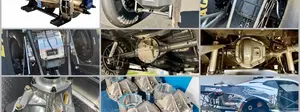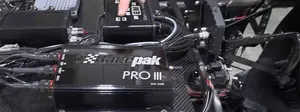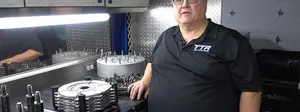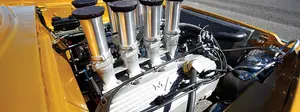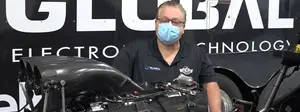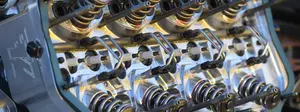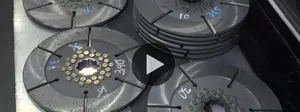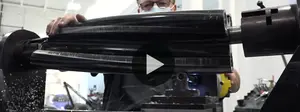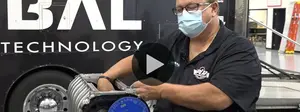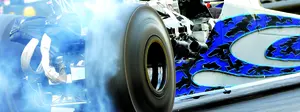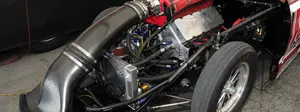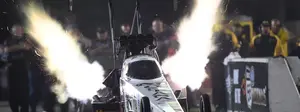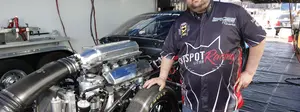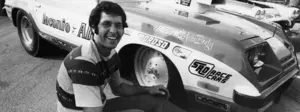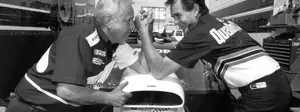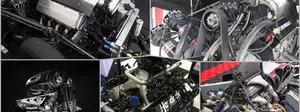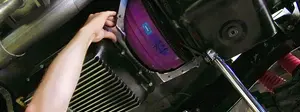

How you can transform a stock Mustang GT into a 10-second dragstrip monster












Many of us still romanticize about the so-called “good old days” of hot rodding in the 1960s and ’70s when vintage muscle cars ruled America’s dragstrips and streets. But the truth is, those days still exist, and in many ways, things are better than they’ve ever been. As much as we all fawn over a classic ’69 Camaro or ’70 Charger, the truth is that today’s modern muscle cars feature a level of performance and technological sophistication that their ancestors could only dream of. To illustrate that point, we took a 2014 Ford Mustang GT and turned it into a mid-10-second weekend racer and managed to do it without breaking the bank or sacrificing mileage or reliability.
While we elected to use a Mustang as our platform, this project would work with almost any modern muscle car, including the Corvette, Camaro, Challenger, Charger, and a variety of imports. Our goals were admittedly ambitious, but also very obtainable using the vast amount of modern technology that’s available. Put simply, we wanted a car that was capable of 10-second elapsed times on the dragstrip, but it also needed to be suitable for daily driving. Furthermore, we wanted a car that was consistent enough to be an effective weekly bracket racer. Is that too much to ask? Apparently not.
As it comes from the factory, our Mustang had plenty of pep in its step. Factory rated at 420-horsepower; the latest version of Ford’s popular pony car was capable of high 12-second elapsed times. Those numbers became consistently more attainable following our first mod, which was the addition of aftermarket wheels and tires. For most performance enthusiasts, a wheel and tire combo are the most reliable and cost-efficient way to deliver improved performance. In this case, a set of 17-inch JMS Avenger wheels and Mickey Thompson 305/45/17 drag radials were added. Tire technology has come a long way, even in the past few years, so it’s not difficult to find a multi-purpose tire that works well on a dragstrip but is also D.O.T. approved for street use.
Wheels and tires were a great first step, but in order to run the sort of 10-second numbers we were looking for, our Mustang needed a serious infusion of power. In order to coax that sort of performance from an S197 (’05-’14) Mustang, we’d need approximately 550-580 rear-wheel-horsepower, depending on vehicle weight and gearing. The stock Mustang made roughly 350-horsepower on a chassis dyno, so simple math dictated that we'd need to find roughly 200-hp to be where we wanted to be.
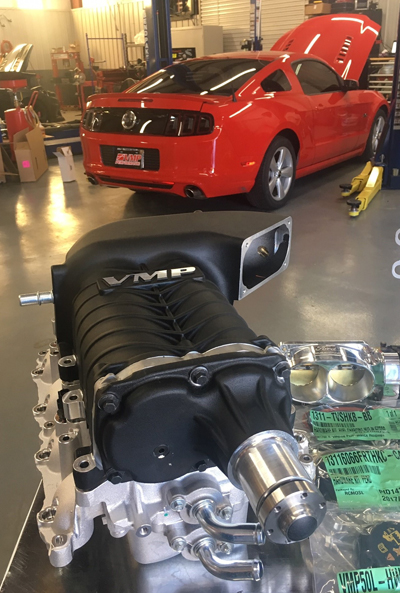
Fortunately, we had multiple options available, and on some level, nearly all of them made sense from both a performance and economics standpoint. Much like vehicles in the NHRA E3 Spark Plugs Pro Mod Drag Racing class, we had our choice of power-adders, including nitrous oxide, turbochargers, centrifugal superchargers, or a roots-style supercharger. Any one of the above would have helped us achieve our desired results, but in the end, we opted for a TVS (Twin Vortices Series) 2.3-liter supercharger from VMP performance.
A proven component, the VMP supercharger was sure to meet our power target, and perhaps more importantly, would do so without sacrificing street drivability. While it does take some effort [horsepower] to drive the supercharger, the intake manifold features a bypass, so the additional boost provided by the supercharger isn’t noticeable at anything less than about half-throttle. That means that under normal daily driving conditions, the car’s average fuel consumption of 20-22 mpg would not be affected. The Ford Coyote engine features four-valve-per-cylinder heads, which tends to work well with the sort of forced induction our supercharger offered. Newer Mustangs also tend to work well with a stock or nearly stock front and rear suspension, which was another added bonus.
The VMP Supercharger comes as a kit that includes not only the supercharger and intake manifold but also a heat exchanger, fuel rails, fuel injectors, spark plugs, a Ford Performance throttle body, a cold air induction kit from JLT Performance, and all the necessary mounting hardware. Installation is fairly straight forward as the kit includes detailed instructions. While certainly not a project for an amateur, the supercharger installation is something that most amateur mechanics could tackle in a weekend. The staff at VMP Performance completed the installation in about 8-10 hours with no complications. Once finished, it was back to the dyno to get our power numbers and refine the tune-up. We were not at all surprised to see a massive increase to 605-horsepower at the rear wheels, and the torque numbers were also dramatically improved at 526 pounds-feet. Big numbers on the dyno are one thing, but the real test was going to come at the track.
Two days after installing the supercharger, we hit the dragstrip at Bradenton Motorsports Park, and our first run was a 10.81 at more than 126-mph. A couple hours later with the sun setting, we backed that up with a 10.79 — so our Mustang was not only fast, but it was also consistent. These runs were made using a base-tune designed for 93-octane pump gas. We had the option to add some high-octane racing fuel and adjust the tune for even more performance, but that would be another project for another day. Incredibly, we were able to hit our target with a car that still had a stock suspension, stock rear end, stock transmission, and even a stock exhaust.
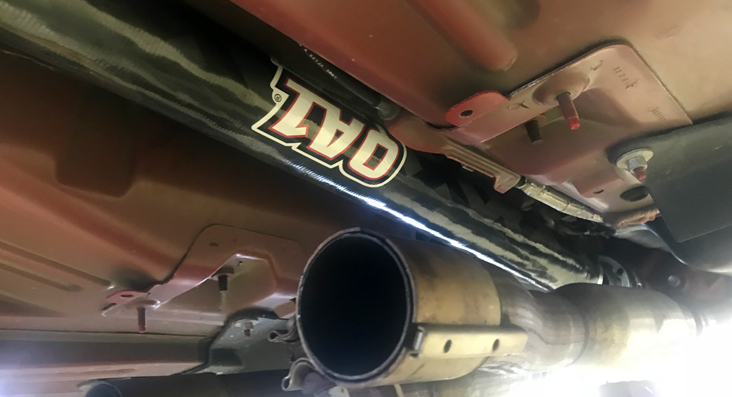
It's also worth noting that while our Mustang fits the rules for 2008 and newer vehicles, we did add a driveshaft loop from Stiffler’s Performance. At the same time, we also opted to replace the stock two-piece driveshaft with a fancy one-piece carbon fiber unit from QA1 Performance. Both items were simple to install and provided some extra peace of mind. The carbon fiber driveshaft also helped reduce rotating weight, providing an additional boost in performance.
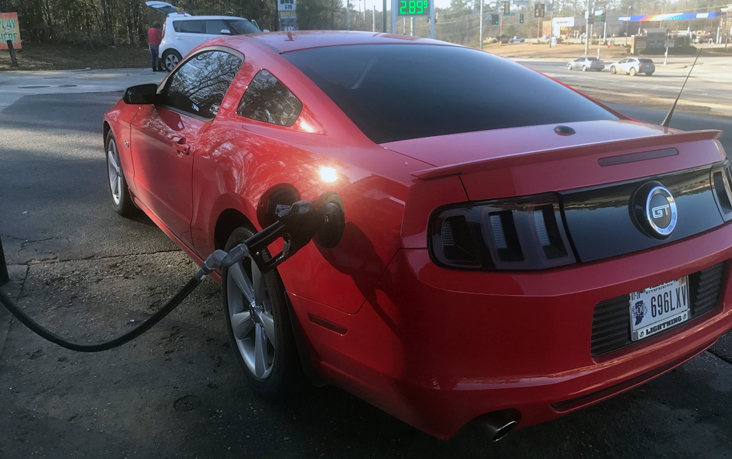
With our primary mission accomplished, it was time to actually have some fun with our new 10-second sleeper. As expected, the car was not only quick, but also extremely consistent, which made for some initial success in E.T. bracket racing, including a victory in its competition debut at the 2018 NMRA Spring Shootout event at Bradenton Motorsports Park. Weather permitting, our Mustang was consistently in the high ten-second zone almost everywhere we went. In the summer months, that number became a little tougher to hit. There are some remedies for that and, fortunately, most of them happened to be low-cost and low-effort measures.
When it came time to find even more horsepower, we quickly found that using a fuel additive or octane-booster would do the trick. We opted to use Boostane, which can easily take a tank of 93-octane pump gas and turn it into 100-105-octane racing fuel. That allows us to get more aggressive with our timing curve, which is something that vehicles with forced induction absolutely love. After experimenting with a couple of different tunes, we got our Mustang to run in the high tens under just about any weather condition, and with a decent density altitude reading, we were in the low 10.7s at nearly 130 mph. The additional upside of using Boostane was that it can be used whenever or wherever necessary, and it does not affect day-to-day driving.
At this point, our Mustang had already proven itself as a great dual-purpose street-strip car, but now it was time to take on the ultimate test of man and machine, Hot Rod Magazine’s Drag Week event. For those not familiar, Drag Week is an event where street/strip cars are driven 1,000-plus miles on public roads during a marathon that includes four dragstrips and five races in five days. Competitors must make at least one run per day, and vehicles must be driven from track to track without the aid of a trailer or other support equipment.
Our first shot at Drag Week in 2018 proved to be a success with a 10.95-second average over the course of the week even though the event was held primarily at Southern tracks, including three NHRA national event facilities — Atlanta Dragway, Bristol Dragway, and zMax Dragway. A second attempt at Drag Week in Sept. 2019 proved to be equally as rewarding with several more 10-second time slips, including a best-ever speed of 131.29 mph at Atco Dragway in New Jersey. In both events, the car aced the highway portion of the event with flying colors with over 2,000 miles of trouble-free highway driving.

After more than a year of street/strip use, it was time to re-evaluate our goals and ponder a course of action to get there. By this point, we’d made well over 100 runs down the dragstrip with nary a hiccup, but there was also the overlying feeling that we were living on borrowed time. Today’s modern muscle cars are built to withstand big horsepower numbers, but it’s always smart to detect a small problem before it becomes a big problem. Better still, anticipate a potential problem and address it immediately. To that end, we elected to upgrade the Ford 8.8 rear-end with some aftermarket components, including a set of Strange axles, an Eaton Tru-Track posi unit, and a fresh ring and pinion gear from Richmond Gear. Surprisingly, none of the stock components showed any signs of excess wear and tear, but the addition of quality aftermarket parts provided some peace of mind.
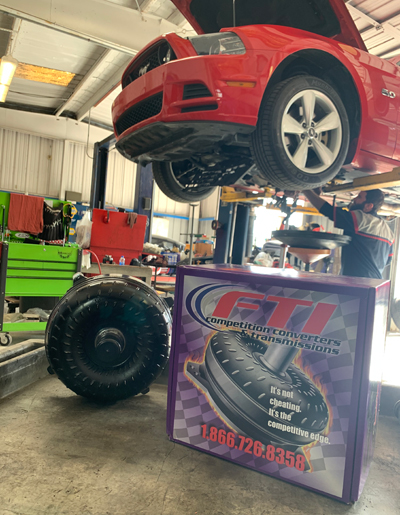
There was an additional reason for strengthening the rear-end unit, and that was our decision to install an aftermarket torque converter from FTI Performance. The stock converter had served us well, but with a stall speed of around 2,000-2,200 rpm, we knew there were massive performance gains to be had simply by installing a different converter. The FTI unit we choose would give us a stall speed of 3,800 rpm, which would allow for more rpm on the launch and a dramatic reduction in 60-foot times. The new converter would also hit the rear tires much harder, which only served to confirm our need for a driveline upgrade. At this point, we also opted to replace the stock rear shocks with a set of double-adjustable shocks from QA-1 Performance.
The new converter and shock combo worked as advertised, and our 60-foot clockings dropped by nearly two-tenths, from 1.6 to 1.4, and there was a similar performance gain in elapsed times with early testing resulting in a personal best 10.55 while still using the 93-octane pump gas tune-up. With a healthy dose of octane booster, it’s not unreasonable to think we could run in the 10.20-10.30 range with the car. Race results were also favorable with a runner-up finish at the season-opening NMRA Spring Break Shootout event in Bradenton.
The new converter also did very little to alter the car’s performance on the street. Gas mileage was not adversely affected, and once the converter is in the lock-up mode at approximately 30 mph, it isn’t noticeable. The new shocks also feature enough adjustment with settings that can quickly be changed from street to strip mode.
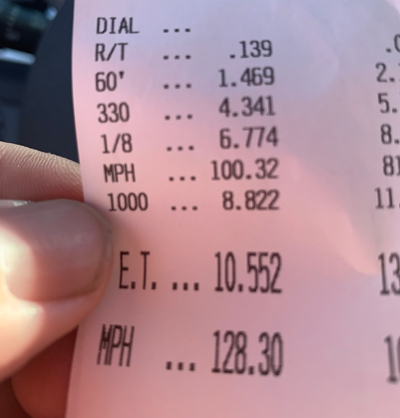
Looking back, we more than exceeded our goal to build a fast, fun, and affordable street car that should prove to be reliable transportation and a competitive bracket car for many years. Looking ahead, we have to wonder, what’s next? How far could we go with this build and still have the car street legal? Honestly, the sky is the limit. In an event like Drag Week, there are plenty of fully street-legal vehicles running in the nine-second zone, and many of them are much quicker. Of course, additional performance gains would also mandate additional safety equipment, especially if we were to attempt to venture into the nine-second zone. Regardless of your performance goals or your budget, our Mustang build should make it clear that when it comes to good old American muscle cars, these are the good old days.























